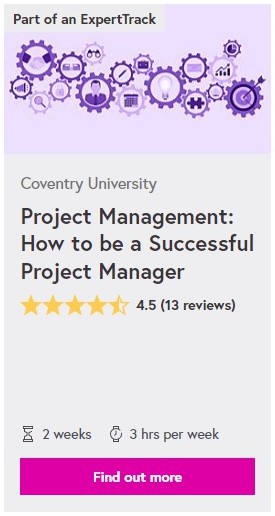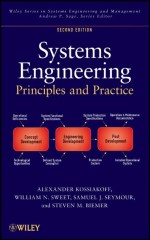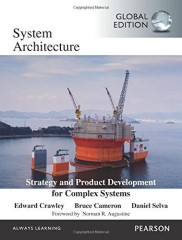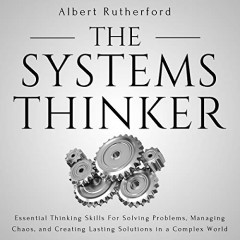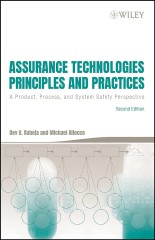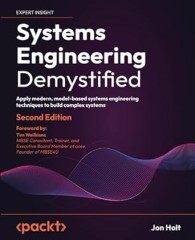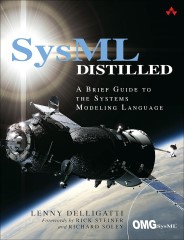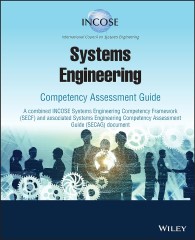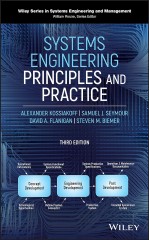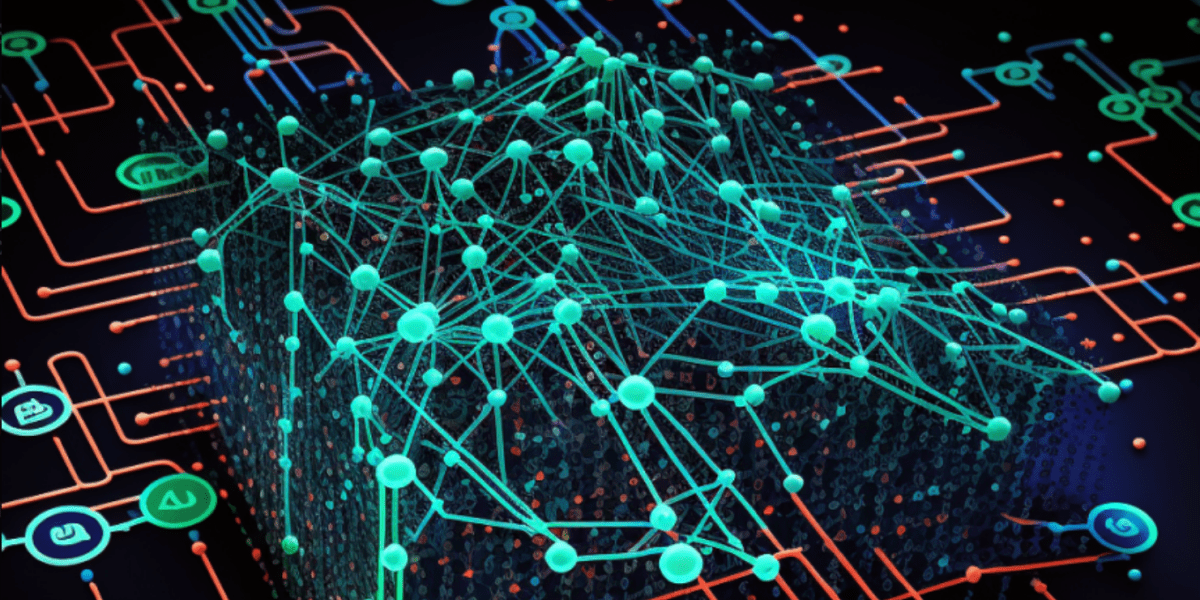The landscape of engineering is rapidly transforming, marked by a significant paradigm shift that challenges long-established practices. This disruption is driven by the emergence of systems engineering (SE)—a holistic methodology that promises to revolutionize how we design, implement, and manage complex projects. With its emphasis on interdisciplinary collaboration, integration, and lifecycle management, SE presents a bold new approach that could fundamentally alter the engineering profession.
At the heart of this transformation lies a provocative and crucial question: Will systems engineering replace traditional engineers? This question is not just theoretical; it has practical implications for the future of the engineering workforce, education, and the industry as a whole.
Table of Contents
- Introduction
- 1. What Clients and Customers Will Buy in the Future
- Investment in Resources and Assets
- Leveraging Future Technologies and Efficiencies
- Customization and Flexibility
- Certainty of Outcome with Reliability and Robustness
- Sustainability and Environmental Impact
- Integration with Digital and IoT Technologies
- Scalability and Future-Proofing
- Enhanced User Experience
- Cost-Effectiveness and ROI
- Regulatory Compliance and Safety
- Security and Data Protection
- Geopolitical Drivers and Local Manufacturing
- Geopolitical Drivers and Local Manufacturing
- 2. What Engineers Need to Do to Respond
- 3. What Engineers Need to Do to Respond
- Embrace a Whole of Life Approach
- Enhance Decision Visibility
- Cultivate Systems Thinking
- Adopt Agile Project Management
- Embrace Data-Driven Optimization
- Strengthen Collaborative Stakeholder Engagement
- Integrate Advanced Methodologies
- Manage Complexity Effectively
- Prioritize Sustainable and Ethical Practices
- Master Digital and IoT Integrations
- 4. Why Systems Engineering Will Be the Catalyst to the Next Phase
- Innovation vs. Tradition
- Risk Aversion
- Adherence to Standards
- Resistance to Change
- Education and Training
- Regulatory Frameworks
- Opportunities in Disruption
- Collaboration and Interdisciplinary Approach
- Leadership and Change Management
- Championing Change in Engineering Organizations
- Continuous Improvement
- Navigating Change: A Balanced Approach
- Conclusion: Navigating the Future of Engineering
Introduction
We will delve into the potential implications of SE and how it may reshape traditional engineering roles and practices within the industry, particularly with the integration of Model-Based Systems Engineering (MBSE).
In this article, we will explore four key areas to understand this evolving dynamic:
1. What Clients and Customers Will Buy in the Future: Understanding future client demands is crucial. We’ll examine the key factors that will shape client investments and expectations, such as leveraging advanced technologies like Artificial Intelligence (AI) and the Internet of Things (IoT), customization, and sustainability. We’ll also look at how lifecycle management plays a vital role in meeting these demands and ensuring long-term success.
2. What Engineers Need to Do to Respond: Engineers must adapt to remain relevant: This section will provide insights into how engineers can embrace SE methodologies, integrate new technologies like MBSE and AI, and continually improve to meet future challenges. By focusing on user and community expectations, engineers can deliver solutions that not only meet technical requirements but also provide superior user experiences and social benefits.
3. Why Systems Engineering Will Be the Catalyst to the Next Phase: Finally, we’ll explore why SE, with its holistic lifecycle-based approaches and integration of advanced methodologies like AI and MBSE, will be the catalyst driving the next phase of engineering excellence. This transformation is essential for aligning with evolving user and community expectations, ensuring that engineering practices remain relevant and impactful.
By navigating through these areas, we aim to provoke thoughtful dialogue on the evolving dynamics of engineering in an increasingly complex and interconnected world. Join us as we unravel the possibilities and contemplate the future of engineering through the lens of systems thinking and innovation.

1. What Clients and Customers Will Buy in the Future
Understanding what clients will demand in the future is critical for predicting how systems engineering will transform the engineering landscape. Clients, whether government agencies or private entities, face numerous challenges that drive their investment decisions. These challenges include managing costs, meeting high-quality standards, and ensuring timely project completion. Here’s a breakdown of the key factors that will shape client investments and expectations in the future across various industries.
Investment in Resources and Assets
Clients will continue to invest heavily in developing resources and assets across various sectors. Whether in transportation, energy, manufacturing, or technology, the key challenge remains meeting high demands for quality and performance while managing costs and timelines.
- Transportation: Investing in next-generation public transit systems, autonomous vehicles, and high-speed rail.
- Energy: Developing renewable energy projects such as wind farms, solar power plants, and smart grids.
- Manufacturing: Building advanced manufacturing facilities with automated processes and quality control.
- Technology: Creating infrastructure for digital transformations, including data centers and telecommunications networks.
Leveraging Future Technologies and Efficiencies
Clients will increasingly seek to adopt advanced tools, materials, and technologies to gain competitive advantages and improve operational efficiencies.
- Artificial Intelligence: Utilizing AI for predictive analytics, real-time decision-making, and machine learning applications in various sectors.
- IoT Integration: Implementing IoT devices for enhanced monitoring, automation, and data-driven decision-making across industries.
- Advanced Materials: Developing and adopting materials that offer superior performance, durability, and sustainability.
Customization and Flexibility
There is a growing demand for highly customizable and flexible solutions tailored to specific operational needs. Clients in various industries will seek adaptable and bespoke solutions.
- Automotive Industry: Producing vehicles with customizable features to meet diverse consumer preferences and regulatory requirements.
- Retail: Developing flexible supply chain solutions that can quickly adapt to changing market demands.
- Healthcare: Providing modular healthcare facilities that can be reconfigured to meet varying patient care needs.
Certainty of Outcome with Reliability and Robustness
Ensuring the reliability and robustness of systems over their lifecycle is increasingly important. Clients require greater certainty of outcomes to ensure their systems perform as intended, even in critical and demanding environments.
- Energy: Developing resilient energy systems that ensure continuous operation during adverse conditions.
- Aerospace: Designing aircraft systems that are highly reliable and robust against failures.
- Infrastructure: Constructing buildings and bridges with materials and designs that ensure long-term durability and safety.
Sustainability and Environmental Impact
Prioritizing sustainable and environmentally friendly solutions is a growing trend. Clients aim to reduce their carbon footprints and comply with stringent environmental regulations while maintaining operational efficiency.
- Green Construction: Using sustainable materials and practices in building and infrastructure projects.
- Eco-Friendly Manufacturing: Implementing low-carbon processes and renewable energy sources in manufacturing plants.
- Sustainable Agriculture: Developing farming techniques and technologies that minimize environmental impact.
Integration with Digital and IoT Technologies
The seamless integration of digital and IoT technologies is vital for improving operational efficiency and decision-making capabilities. Clients will look for assets that enable advanced data analytics, remote monitoring, and predictive maintenance.
- Smart Cities: Implementing IoT for urban planning, traffic management, and public safety in smart city projects.
- Healthcare IoT: Using connected patient monitoring devices and telehealth solutions to enhance patient care.
- Industrial IoT: Connecting machinery for real-time data tracking and predictive maintenance in various manufacturing environments.
Scalability and Future-Proofing
Clients demand scalable solutions that can grow and evolve with technological advancements and increasing demands. This is vital across various industries.
- Technology: Developing scalable data centers that can expand with increasing data storage and processing needs.
- Transportation: Designing public transit systems that can scale to accommodate growing populations and urban expansions.
- Retail: Creating adaptable retail spaces and supply chains that can respond to market fluctuations.
Enhanced User Experience
Providing a superior user experience is crucial for client satisfaction. Clients across different sectors seek systems that are intuitive and user-friendly, ensuring a seamless and productive user experience.
- Consumer Electronics: Producing devices with intuitive interfaces and excellent user experience design.
- Public Services: Enhancing the usability and accessibility of government e-services and public infrastructure.
- Insurance: Simplifying insurance claim processes through user-friendly digital platforms.
Cost-Effectiveness and ROI
Cost-effective solutions with a strong return on investment (ROI) are essential for clients, especially in sectors with tight budget constraints.
- Government Projects: Delivering high-quality infrastructure and public services within budget constraints.
- Private Investments: Ensuring investments in new technologies and facilities demonstrate clear financial benefits through cost savings and long-term value.
- Education: Developing cost-effective and scalable educational technologies that provide significant ROI.
Regulatory Compliance and Safety
Ensuring regulatory compliance and safety is critical for reducing legal risks and enhancing operational safety. Clients must adhere to stringent standards across various sectors.
- Financial Services: Implementing compliance measures and cybersecurity protocols to safeguard customer information.
- Pharmaceuticals: Ensuring drug manufacturing processes meet regulatory standards for safety and efficacy through new systems engineering approaches.
- Construction: Adhering to building codes and safety regulations to ensure the safety and durability of structures.
Security and Data Protection
As cyber threats escalate, robust security measures and data protection features are paramount. Clients require systems that safeguard sensitive information and ensure operational integrity.
- Finance: Protecting financial data and transactions from cyber threats through advanced security measures.
- Healthcare: Ensuring patient data privacy and security through secure electronic health record systems.
- Retail: Safeguarding e-commerce platforms from data breaches and ensuring secure transactions.
Geopolitical Drivers and Local Manufacturing
Geopolitical factors increasingly influence purchasing decisions, with a shift toward local manufacturing to reduce dependency on foreign supply chains and enhance national security.
- Automotive: Boosting local manufacturing to ensure supply chain resilience and comply with trade policies.
- Utilities: Developing local energy resources to enhance energy security and independence.
- Technology: Investing in domestic tech production to reduce reliance on foreign components and enhance cybersecurity.
In conclusion, the evolving demands of clients across various sectors highlight the importance of systems engineering in delivering innovative, reliable, and adaptable solutions. As clients continue to seek advanced technologies, customization, and sustainability, the role of systems engineering will be instrumental in shaping the future of engineering practices across numerous industries.
Geopolitical Drivers and Local Manufacturing
Geopolitical factors increasingly influence purchasing decisions, with a shift toward local manufacturing to reduce dependency on foreign supply chains and enhance national security.
- Defense Procurement: Favoring local manufacturing for defense equipment to bolster national security.
- Public Healthcare Projects: Investing in locally produced healthcare technologies to comply with policies promoting local production.
- Industrial Investments: Supporting local manufacturing to maintain economic resilience and meet global standards.
In conclusion, the evolving demands of clients across various sectors highlight the importance of systems engineering in delivering innovative, reliable, and adaptable solutions. As clients continue to seek advanced technologies, customization, and sustainability, the role of systems engineering will be instrumental in shaping the future of engineering practices and the broader industry.
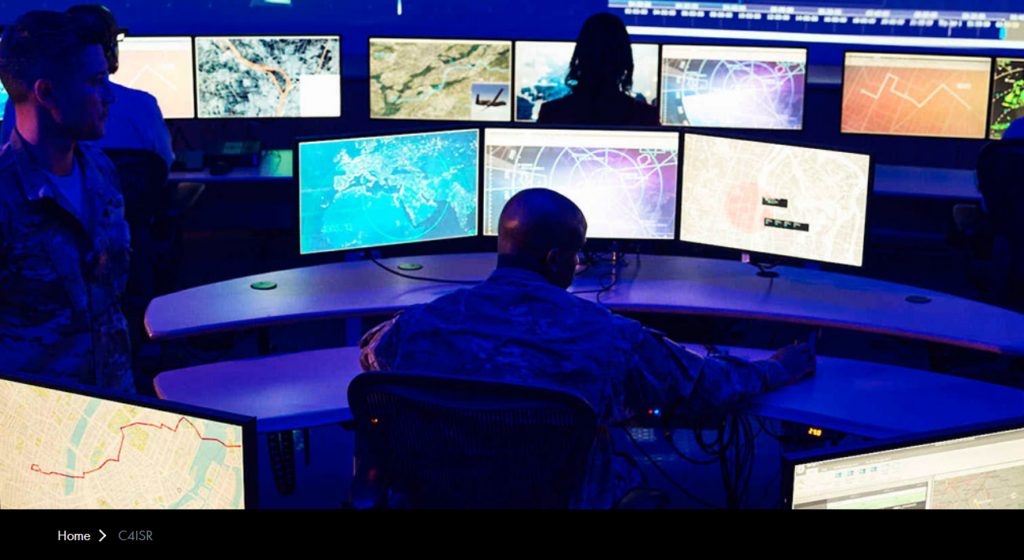
2. What Engineers Need to Do to Respond
As client expectations evolve, engineers must adapt and respond to meet these new demands effectively. Here’s how engineers can rise to the challenge:
Optimize Investment Returns: Focus on delivering projects that offer value within budget and timelines.
- Commit to Lifelong Learning: Stay updated with new skills and technologies to maintain competitiveness.
- Prioritize User-Centric Design: Create intuitive, user-friendly solutions tailored to end users’ actual needs.
- Adopt Efficient Methods: Innovate in implementation to use fewer resources and promote sustainability.
- Balance Standards with Innovation: Challenge norms while meeting established standards.
- Focus on Resilience and Risk Management: Design systems to withstand disruptions with effective risk management.
- Enhance Interdisciplinary Integration: Collaborate across disciplines for holistic problem-solving.
- Leverage Advanced Technologies: Integrate AI and sustainable materials for improved performance.
- Consider Environmental Impact: Evaluate design decisions for sustainability and social responsibility.
- Design for Futureproofing: Ensure solutions can adapt to future technological and operational changes.
- Implement Robust Security Measures: Safeguard integrated systems with strong cybersecurity measures.
- Develop Flexible Solutions: Create adaptable solutions responsive to community and environmental changes.
- Ensure Regulatory Compliance and Safety: Stay compliant with regulations and prioritize safety measures.
These actions enable engineers to meet client expectations effectively, delivering innovative, sustainable, and resilient solutions across various industries.
Engineers must prioritize optimizing returns on investment, ensuring that projects are delivered effectively and offer significant value. This involves meticulous planning and execution to meet client goals within budget and time constraints.
To stay ahead of technological advancements, engineers must commit to lifelong learning. Acquiring new skills and staying updated with emerging methodologies is essential for maintaining relevance and expertise in a rapidly evolving field. Continuous learning and skill development are key to staying competitive.
A user-centric design approach is crucial. Engineers need to create solutions that are intuitive, user-friendly, and tailored to the actual needs of end users. This ensures that the end products are practical, effective, and widely accepted by those who use them.
Adopting new implementation and construction methods is vital for efficiency. Engineers must find ways to deliver assets using fewer resources and materials, incorporating practices such as material reuse to enhance sustainability and cost-effectiveness.
There is a need to balance adherence to established standards with the application of first principles thinking. Engineers should challenge norms and explore innovative solutions that bring added value to end users while ensuring compliance with necessary standards.
Resilience and risk management are essential focuses. Engineers must design systems capable of withstanding and recovering from unexpected disruptions. Effective risk management strategies ensure continuous and reliable operation under various conditions.
Increasing integration beyond core specialties is crucial. Engineers must embrace systems thinking and foster enhanced collaboration and communication with end users and broader stakeholders, incorporating interdisciplinary knowledge to address complex challenges holistically.
Utilizing advanced tools and technologies is imperative. Engineers should stay abreast of innovations such as battery storage devices and new materials, integrating them into their designs to improve performance and sustainability.
Recommended Further Reading Amazon BooksUnderstanding the impact of design decisions on sustainability and the environment is critical. Engineers should consider aspects such as embodied carbon and future community expectations, along with ethical considerations and social responsibility in their projects.
Futureproofing designs is another crucial aspect. Engineers should ensure their solutions are adaptable to technological advancements and evolving needs, providing long-term value and relevance.
With the increasing reliance on integrated technology systems, engineers must implement robust security measures to protect against cyber threats and ensure the integrity of broader IT networks and software.
Developing customizable and flexible solutions is key. Engineers should create solutions that can adapt to changing community expectations and environmental conditions, such as climate change.
Finally, regulatory compliance and safety must remain a priority. As assets grow in complexity, engineers must stay updated with regulations and implement robust safety measures to protect users and the broader environment.
Key Challenges and Recommended Mitigations for Future Engineering Practices
| Focus Area for Engineers | Key Challenges | Recommended Mitigations |
|---|---|---|
| Focus on Delivering Investment | Optimizing investment returns, ensuring value and effectiveness in projects. | Implement rigorous cost-benefit analyses and ROI assessments; engage in continuous communication with stakeholders to align project outcomes with their expectations. |
| Continuous Learning and Skill Development | Keeping pace with technological advancements and emerging methodologies. | Commit to lifelong learning through formal education, certifications, and hands-on training; participate in industry conferences and workshops. |
| User-Centric Design | Ensuring solutions are intuitive, user-friendly, and meet the actual needs of end users. | Conduct user research and usability testing; incorporate feedback loops to continuously improve user experience. |
| Evolving Implementation and Construction Methods | Adopting new methods to deliver assets more efficiently, using fewer resources and materials. | Explore and adopt practices like modular construction and material reuse; leverage emerging construction technologies such as 3D printing. |
| Balance Standards and First Principles | Balancing meeting standards with challenging norms using first principles. | Understand and comply with industry standards while using first principles thinking to innovate and add value; continuously re-evaluate standards to ensure they are beneficial. |
| Resilience and Risk Management | Designing systems that can withstand and recover from disruptions and failures. | Conduct thorough risk assessments and implement redundancy and fail-safe mechanisms; utilize scenario planning and stress testing. |
| Integration and Interdisciplinary Knowledge | Increasing integration beyond core specialties, requiring systems thinking and enhanced collaboration. | Foster cross-disciplinary teams and encourage knowledge sharing; adopt systems engineering methodologies and tools to manage complexity. |
| Leverage Advanced Tools and Technologies | Adapting to evolving tools and technologies such as new materials and energy storage devices. | Continuously monitor technological advancements; invest in pilot projects to evaluate and integrate new technologies. |
| Sustainability and Environmental Impact | Understanding the relationship between design decisions and sustainability, including ethical and social responsibility. | Assess environmental impacts through lifecycle analysis; implement sustainable design principles and materials; engage in ethical decision-making processes. |
| Design for Futureproofing | Ensuring solutions can adapt to technological advancements and changing needs. | Incorporate modular and scalable design elements; establish upgrade paths and regular maintenance schedules to integrate new technologies. |
| Ensure Robust Security Measures | Protecting integrated technology systems and broader IT networks from security threats. | Implement comprehensive cybersecurity protocols; conduct regular security audits and vulnerability assessments; train staff on cybersecurity best practices. |
| Develop Customizable and Flexible Solutions | Adapting to community expectations and environmental changes such as climate change. | Design with flexibility and modularity in mind; actively monitor community needs and environmental trends for proactive adjustments. |
| Regulatory Compliance and Safety | Maintaining focus on regulatory compliance and safety despite increasing asset complexity. | Stay updated with regulatory changes; implement robust compliance tracking systems; engage with regulators early in the project lifecycle to ensure alignment. |
By focusing on these areas, engineers can effectively respond to client needs, ensuring that they deliver solutions that are innovative, sustainable, and aligned with evolving expectations.
The Synergy of Systems Engineering and AI
Breaking Down Complexity: The Synergistic Approach
- Component-Level Analysis: Systems engineering and AI both break down complex systems into manageable parts.
- Subsystem Integration: Ensuring seamless integration and minimizing systemic failure risks.
- Iterative Improvement: Continuously adapting and refining components for optimal system performance.
- Task Segmentation: AI agents divide tasks into smaller units for efficient problem-solving.
- Collaborative Agents: Multiple AI agents working together enhance overall outcomes.
- Adaptive Learning: Continuous improvement through machine learning algorithms.
Integrating systems engineering principles with AI methodologies results in a powerful framework to address modern engineering challenges effectively, providing greater certainty and optimized performance across all system components.
3. What Engineers Need to Do to Respond
As the demands of clients evolve and systems engineering gains prominence, traditional engineers must adapt to remain relevant and effective. By embracing systems engineering methodologies, engineers can enhance their capabilities and better meet future challenges. Here’s a detailed guide on how engineers can respond to these changes:
Embrace a Whole of Life Approach
Systems engineering emphasizes a holistic approach across the project lifecycle, from inception through operation. Engineers need to focus on whole-life thinking to optimize costs, ensure long-term reliability, and achieve sustainability of assets.
- Lifecycle Management: Incorporate lifecycle considerations into project planning and execution.
- AI and MBSE Integration: Use Artificial Intelligence (AI) and Model-Based Systems Engineering (MBSE) to enhance decision-making and provide predictive insights for resource allocation.
- Sustainability Focus: Ensure that sustainability is a key element of design and operational plans.
Systems engineering emphasizes a holistic approach across the project lifecycle, from inception through operation. Engineers need to focus on whole-life thinking to optimize costs, ensure long-term reliability, and achieve sustainability of assets. By integrating IoT, big data, AI, and machine learning (ML), engineers can have far greater certainty about project outcomes from the early concept phase.
| Aspect | Description | Systems Engineering Approach | AI/MBSE Integration |
|---|---|---|---|
| Lifecycle Management | Incorporate lifecycle considerations into project planning and execution. | Holistic Evaluation | AI-driven tools analyze the full lifecycle from design to decommissioning |
| Resource Optimization | MBSE models enable optimal resource allocation through simulation | ||
| Early Concept Testing | IoT devices collect real-time data to validate early concepts and scenarios through IoT relationship to FMECA outcomes | ||
| Continuous Feedback | Big data analytics continuously update lifecycle models for improved accuracy | ||
| AI and MBSE Integration | Use Artificial Intelligence (AI) and Model-Based Systems Engineering (MBSE) to enhance decision-making and provide predictive insights for resource allocation. | Predictive Modeling | AI and ML algorithms predict project outcomes with high accuracy |
| Scenario Testing | MBSE integrates and tests multiple scenarios in real time using AI | ||
| Real-Time Adjustment | IoT-enabled feedback loops allow real-time project adjustments | ||
| Sustainability Focus | Ensure that sustainability is a key element of design and operational plans. | Environmental Impact Analysis | AI evaluates environmental impact throughout the lifecycle |
| Resource Efficiency | MBSE optimizes resource use for maximal sustainability | ||
| Compliance Monitoring | IoT sensors monitor ongoing compliance with environmental regulations |
In the embrace of a whole of life approach, leveraging IoT, big data, AI, and ML enables engineers to understand project outcomes with far greater certainty from the early conceptual phases. By linking real-time data collection and scenario testing, engineers can validate concepts, optimize resource allocation, and ensure sustainability, all while maintaining a comprehensive view of the project lifecycle. This integrated approach not only enhances decision-making but also ensures long-term reliability and environmental responsibility in engineering projects.
Dynamically Linking Concept of Operations to FMECA Models: One of the significant advancements in systems engineering is the dynamic linking of the Concept of Operations (ConOps) to Failure Modes, Effects, and Criticality Analysis (FMECA) models. This integration provides greater certainty of outcomes in asset performance, enabling engineers to predict and mitigate potential issues proactively.
Enhance Decision Visibility
Enhanced visibility into decisions across all project phases and subsystem interactions is crucial for optimizing resource allocation and aligning decisions with project goals. Systems Engineering provides tools to achieve this visibility.
- Traceability and Analysis: Implement systems that offer comprehensive traceability and rigorous analysis to anticipate impacts and reduce uncertainties.
- AI and MBSE Tools: Utilize AI and MBSE to facilitate scenario analysis, improving decision-making accuracy and efficiency.
Cultivate Systems Thinking
Systems engineering promotes a structured approach to managing project complexities. Engineers should develop skills in breaking down intricate systems into manageable components for efficient problem-solving.
- Component Management: Focus on understanding and solving issues at the component level to create robust system integration strategies.
- Modeling and Simulation: Use AI and MBSE methodologies to support systems thinking through modeling and simulation capabilities.
Adopt Agile Project Management
Systems engineering emphasizes agile project management practices, allowing for adaptive responses to changing requirements. This flexibility is crucial for aligning projects with stakeholder needs, timelines, and regulatory requirements.
- Agile Frameworks: Implement agile frameworks that enable real-time data analysis, predictive modeling, and adaptive planning.
- Proactive Management: Use AI and MBSE to enhance data-driven insights for proactive project management.
Embrace Data-Driven Optimization
Leveraging data analytics to enhance decision-making precision and efficiency is an essential practice within systems engineering. Engineers can optimize designs and predict performance outcomes through data analysis.
- Data Analytics: Integrate robust data analytics into project workflows to optimize designs and proactively address challenges.
- AI and MBSE Insights: Employ AI and MBSE for data-driven insights and simulations, ensuring informed decision-making and optimized project outcomes.
Strengthen Collaborative Stakeholder Engagement
Systems engineering promotes collaborative engagement with stakeholders, ensuring diverse perspectives are integrated into projects. This approach enhances project acceptance and aligns with regulatory standards.
- Stakeholder Integration: Foster a culture of collaboration and consensus-building with stakeholders.
- Shared Data Platforms: Utilize AI and MBSE to provide shared data platforms for transparent and reliable information sharing.
Integrate Advanced Methodologies
Integrating methodologies like modeling, simulation, and risk analysis within systems engineering enhances project planning and execution. Engineers can simulate scenarios, optimize designs, and mitigate risks effectively.
- Modeling Capabilities: Use advanced modeling tools to simulate different project scenarios.
- Predictive Analytics: Implement predictive analytics to assess risks and optimize designs.
Manage Complexity Effectively
Systems engineering excels in managing project complexity by addressing interdependencies and uncertainties. Engineers should adopt frameworks to identify and mitigate risks, optimize system integration, and maintain project resilience.
- Complexity Management: Develop strategies for managing the complexity, including real-time monitoring and adaptive planning.
- AI and MBSE Tools: Use AI and MBSE for scenario planning and real-time decision-making to remain adaptable to changing conditions.
Prioritize Sustainable and Ethical Practices
Emphasizing sustainable and ethical practices throughout project development is crucial. Engineers must consider environmental impacts, resource efficiency, and ethical considerations in their designs.
- Sustainability Initiatives: Integrate sustainability principles in design and operation phases.
- Ethical Decision Making: Employ AI and MBSE to support ethical practices by providing transparent data analysis and forecasting environmental impacts.
Master Digital and IoT Integrations
The integration of digital and IoT technologies is imperative for modern engineering projects. Engineers need to develop capabilities to handle these technologies effectively.
- IoT Integration: Ensure systems are capable of seamless integration with IoT technologies for enhanced operational efficiency.
- Digital Tools: Use digital tools for real-time monitoring and predictive maintenance.
By embracing systems engineering methodologies alongside AI and MBSE capabilities, engineers can navigate the complexities inherent in modern projects, optimize project outcomes, and innovate toward sustainable and resilient solutions. This integrated approach ensures engineering remains adaptive and responsive to future challenges, driving continuous improvement and excellence in project delivery.
Recommended Further Reading Amazon Books4. Why Systems Engineering Will Be the Catalyst to the Next Phase
The engineering profession, renowned for its rigor and reliability, has traditionally relied on proven methodologies and standards to minimize risk and ensure robust outcomes. While this approach is essential for safety and consistency, it also presents challenges in embracing innovation and adapting to rapidly evolving technologies and client needs. Systems engineering, with its holistic, lifecycle-based approaches, stands as a catalyst to drive the next phase of engineering excellence. Here’s how:
Innovation vs. Tradition
Balancing innovation with tradition poses significant challenges in the engineering profession. While tradition ensures reliability and consistency, innovation is crucial for progress and competitiveness. Systems engineering, with its principles rooted in holistic and lifecycle-based management, provides a structured approach to effectively balance these competing needs. The integration of AI further supports this balance, enabling smarter decision-making and more effective implementations.
- Systems Approach:Systems engineering fosters innovation by breaking down complex systems into manageable components. This segmentation enables incremental improvements without abandoning traditional methodologies, allowing for a balance between maintaining reliability and pursuing innovation.
- Component Analysis: By dissecting complex systems into smaller, manageable parts, engineers can focus on innovating individual components without disrupting the entire system. This allows for a gradual integration of new technologies, ensuring that traditional systems remain operational and reliable.
- AI-Assisted Design: AI can enhance this approach by providing advanced design and simulation tools that predict the impact of new components on the overall system. This ensures that innovations are seamlessly integrated, maintaining system integrity and performance.
- Structured Experimentation:Systems engineering promotes structured experimentation, enabling new technologies to be tested and validated within a controlled framework. This reduces uncertainty and resistance to innovation by providing a clear pathway for testing and implementation.
- Controlled Framework: Within a systems engineering framework, engineers can establish controlled environments for experimentation. This approach minimizes risks and allows for thorough testing and validation of new technologies before full-scale deployment.
- AI and MBSE Tools: AI and Model-Based Systems Engineering (MBSE) tools facilitate this structured experimentation by offering sophisticated modeling and simulation capabilities. These tools can predict how new technologies will behave under various conditions, allowing engineers to evaluate their feasibility and impact accurately.
- Incremental Integration: The controlled framework supported by AI and MBSE allows for incremental integration of innovations, ensuring each step is carefully evaluated and aligned with existing systems. This reduces resistance by demonstrating the reliability and effectiveness of new approaches gradually.
Risk Aversion
Given the high stakes involved in engineering projects, there is a natural tendency towards risk aversion. Engineers prioritize proven solutions to mitigate risks of failure or compromised outcomes.
- Balanced Risk Management: Systems engineering employs rigorous analysis and traceability to manage risks effectively, allowing for safe incorporation of innovative solutions.
- Predictive Insights: AI and MBSE tools within systems engineering offer predictive insights that help identify potential risks and manage them proactively.
Given the high stakes involved in engineering projects, there is a natural tendency towards risk aversion. Engineers prioritize proven solutions to mitigate risks of failure or compromised outcomes. Systems engineering, augmented by AI and MBSE, provides balanced risk management and predictive insights, enabling engineers to effectively incorporate innovative solutions safely.
The following table outlines how systems engineering, integrated with AI and MBSE tools, transforms risk aversion into balanced risk management and proactive risk mitigation. By providing specific examples and elaborate strategies, it highlights how engineers can effectively manage various key risks, ensuring successful project outcomes.
| Aspect | Description | Systems Engineering Approach | AI/MBSE Integration | Key Risks |
|---|---|---|---|---|
| Balanced Risk Management | Employs rigorous analysis and traceability to manage risks effectively. | Systematic approach to identify risks | AI provides real-time data analysis | Project delays due to unforeseen issues |
| Systematic approach to assess risks | AI uses advanced algorithms for risk assessment | Budget overruns | ||
| Systematic approach to mitigate risks | MBSE provides detailed modeling for decision impacts | Technical failures | ||
| Traceability ensures decision consistency | AI enhances traceability through automated documentation | Regulatory non-compliance | ||
| Comprehensive risk analysis | MBSE offers lifecycle-based risk management | Supply chain disruptions | ||
| Robust mitigation strategies | AI/MBSE tools assist in developing mitigation plans | Stakeholder misalignment | ||
| Predictive Insights | AI and MBSE tools offer predictive insights to proactively manage risks. | Forward-looking risk analysis | AI analyzes patterns and forecasts risks | Future market fluctuations |
| Anticipating potential risks | AI enables preventive actions through machine learning | Environmental impacts | ||
| Proactive mitigation plans | MBSE provides simulation for risk scenarios | Technology obsolescence | ||
| Scenario modeling | MBSE enables detailed contingency planning | Cybersecurity threats | ||
| Comprehensive forecasting | AI enhances accuracy of risk predictions | Operational inefficiencies | ||
| Data-driven decision making | MBSE supports data-driven insights | Quality control issues |
Adherence to Standards
Engineers have long adhered to established standards and practices to ensure reliability and safety in project execution. These standards are crucial for regulatory compliance and risk management, but they can sometimes stifle innovation and limit flexibility in adopting new approaches. Systems engineering, founded on principles of holistic and integrated project management, offers a way to balance these competing demands effectively. New ways of working with AI further enhance the ability to adhere to standards while fostering innovation.
- Compliance and Innovation:Systems engineering provides a structured methodology to incorporate new technologies while maintaining compliance with existing standards. By leveraging AI and advanced modeling techniques, systems engineering can optimize both the adherence to standards and the flexibility needed for innovation.
- AI Integration: AI tools can automate compliance checks and provide real-time updates on regulatory changes, ensuring that new technologies are compliant from the onset. They enable predictive modeling and simulations, which help in foreseeing how new technologies can be integrated without violating existing standards.
- Continual Adaptation: Systems engineering frameworks allow for the continual adaptation of standards to incorporate technological advancements. AI-driven analytics can identify gaps where new technologies fit within the regulatory landscape, enabling smoother transitions and adoption processes.
- Regulatory Alignment:Systems engineering offers comprehensive frameworks that align innovative approaches with regulatory requirements, thereby reducing the tension between compliance and advancement.
- Traceability and Documentation: One of the fundamental principles of systems engineering is enhanced traceability and rigorous documentation. These principles ensure that all decisions, especially those involving new technologies, are well-documented and align with regulatory requirements. AI can further enhance this by providing automated documentation and audit trails.
- Scenario Analysis: Advanced MBSE (Model-Based Systems Engineering) tools facilitate scenario analysis, allowing engineers to simulate the impact of incorporating new technologies under various regulatory constraints. AI-enhanced MBSE tools can provide even more accurate simulations and recommendations, optimizing both compliance and innovation.
Systems engineering principles, bolstered by AI and advanced analytics, provide a path forward where engineers can adhere to stringent standards without impeding innovation. By integrating these new ways of working, engineers can ensure that their projects are not only safe and compliant but also at the cutting edge of technological advancement. This balanced approach is crucial for modern engineering practices, as it ensures reliability and safety while embracing the advancements necessary for future growth and competitiveness.
Resistance to Change
The engineering profession may exhibit resistance to change due to the time-tested nature of established practices. Overcoming inertia requires proactive leadership and a commitment to continuous learning.
- Change Management: Systems engineering promotes agile project management, which is inherently adaptive and responsive to change.
- Leadership Role: Effective leadership within systems engineering frameworks encourages embracing new technologies and methodologies, facilitating smoother transitions.
Education and Training
Traditional engineering education focuses on core principles and theories. However, integrating emerging technologies into curricula is increasingly necessary to prepare future engineers for evolving industry demands.
- Curriculum Evolution: Systems engineering emphasizes interdisciplinary knowledge, making it easier to integrate emerging technologies such as AI, IoT, and sustainability practices into engineering education.
- Professional Development: Continuous training in systems engineering approaches ensures that current professionals stay updated with the latest advancements.
Regulatory Frameworks
Compliance with regulatory frameworks is crucial for ensuring public safety and environmental protection. However, navigating these complex landscapes can be challenging, often leading to conservative decision-making.
- Regulatory Integration: Systems engineering provides methodologies to navigate regulatory requirements without curtailing innovation, ensuring both compliance and technological advancement.
- Transparent Decision-Making: Enhanced visibility and traceability help align projects with regulatory standards while still enabling creative solutions.
Opportunities in Disruption
Disruptive technologies like digitalization, AI, and advanced materials present new opportunities for innovation in engineering.
- Technological Integration: Systems engineering integrates these disruptive technologies systematically, leveraging their benefits for improved efficiency, sustainability, and competitiveness.
- Data-Driven Innovation: The use of data analytics within systems engineering allows for data-driven decision-making, optimizing project outcomes and embracing innovation.
Collaboration and Interdisciplinary Approach
Collaboration across disciplines and industries is vital for driving innovation in engineering. Integrating diverse perspectives ensures holistic solutions to complex challenges.
- Interdisciplinary Teams: Systems engineering encourages the formation of interdisciplinary teams, which enhance creative problem-solving and innovation.
- Stakeholder Engagement: Collaborative stakeholder engagement fosters consensus and ensures alignment with broader regulatory and societal expectations.

Leadership and Change Management
Effective leadership and change management are crucial for fostering a culture of innovation within engineering organizations. As the engineering landscape evolves, leaders must balance the need to maintain reliable and proven practices with the imperative to embrace new technologies and methodologies. Systems engineering principles, augmented by AI and modern management practices, provide a robust foundation for driving this transformation.
- Championing Innovation:Leaders in systems engineering must champion new ideas and empower teams to experiment with novel approaches. This proactive stance on innovation is essential for maintaining competitiveness and adaptability in a rapidly changing environment.
- Vision and Inspiration: Leaders need to articulate a clear vision that aligns with both traditional values and innovative aspirations. By setting a forward-looking agenda, they can inspire teams to explore new possibilities without feeling detached from established practices.
- Encouraging Experimentation: Systems engineering principles support a structured approach to innovation, where risks are managed, and experimentation is encouraged. Leaders can use AI-powered tools to facilitate and monitor these experiments, ensuring that they are data-driven and aligned with organizational goals.
- AI-Driven Insights: AI tools can provide leaders with valuable insights into emerging trends and technologies. By leveraging these tools, leaders can make informed decisions about which innovations to pursue and how to integrate them effectively.
- Resource Allocation:Providing the necessary resources and support for innovative projects is essential to fostering a culture of change. Effective resource management ensures that teams have the tools, time, and funding required to explore and implement new ideas.
- Strategic Investment: Systems engineering frameworks help in assessing the potential ROI of innovative projects. This ensures that resources are allocated to initiatives with the highest potential for impact. AI can enhance this process by providing predictive analytics and scenario planning.
- Skill Development: Investing in the upskilling of team members is crucial. Systems engineering and AI integration necessitate continuous learning. Leaders must allocate resources for training programs that cover emerging technologies and new engineering methodologies.
- Support Infrastructure: Developing a robust support infrastructure, including state-of-the-art tools and collaborative platforms, is vital. AI-powered collaborative tools can facilitate communication and coordination among interdisciplinary teams, ensuring that innovative projects are well-supported and efficiently executed.
Championing Change in Engineering Organizations
To drive innovation effectively, leaders must not only champion new ideas but also manage the cultural shift that comes with integrating new methodologies. Systems engineering provides a structured approach to change management, helping to navigate the complexities of transitioning to more innovative practices.
- Change Management Frameworks: Systems engineering principles can be used to design change management frameworks that systematically introduce new technologies and practices while managing resistance and ensuring buy-in from all stakeholders.
- Inclusive Decision-Making: Engaging teams in the decision-making process fosters a sense of ownership and reduces resistance to change. AI tools can provide data-driven insights to support inclusive decision-making, ensuring that every team member feels their input is valued.
- Continuous Feedback Loops: Establishing feedback loops is critical for monitoring the impact of changes and making necessary adjustments. AI-driven analytics can provide real-time feedback, allowing leaders to make data-informed decisions and continuously improve processes.
In summary, leadership and change management are pivotal in fostering a culture of innovation within engineering organizations. By championing innovation and effectively allocating resources, leaders can harness the power of systems engineering and AI to drive transformational change. This approach not only ensures the integration of new technologies and methodologies but also maintains the integrity and reliability of traditional engineering practices. Through visionary leadership and strategic resource management, engineering organizations can navigate the complexities of modernization, ensuring they remain competitive and forward-thinking in an ever-evolving industry.
Continuous Improvement
Embracing a culture of continuous improvement is vital for the engineering profession to remain competitive and relevant.
- Iterative Processes: Systems engineering promotes iterative improvement processes, continually refining and optimizing methodologies.
- Learning from Experience: Documenting and analyzing both successes and failures within a systems framework ensures learning that drives ongoing innovation.
Embracing a culture of continuous improvement is vital for the engineering profession to remain competitive and relevant. Systems engineering, with its emphasis on iterative processes and learning from experience, provides the foundation for ongoing enhancement and innovation.
Successfully navigating the evolving landscape of engineering requires a balanced approach that honors tradition while embracing innovation. By leveraging proven methodologies alongside emerging technologies and fostering adaptability and creativity, the engineering profession can effectively meet future challenges and opportunities.
- Holistic Vision: Systems engineering’s holistic, lifecycle-based approach empowers engineers to address both immediate and long-term goals.
- Enhanced Adaptability: The adaptability and robustness provided by systems engineering ensure the profession can quickly pivot to new demands and technologies.
In conclusion, systems engineering is uniquely positioned to drive the next phase of engineering advancement. It provides the necessary frameworks to integrate innovation with established practices, ensuring the profession remains both reliable and cutting-edge. By embracing systems engineering methodologies, enhanced by AI and MBSE, engineers can optimize project outcomes, innovate sustainably, and lead the industry towards a future of resilience and excellence.
As the engineering landscape continues to evolve, the imperative to balance tradition with innovation becomes increasingly clear. Systems engineering (SE), bolstered by advancements in technologies such as Artificial Intelligence (AI), Model-Based Systems Engineering (MBSE), Internet of Things (IoT), and big data analytics, stands at the forefront of this transformation. By adopting a whole-life approach, engineers can ensure projects are not only reliable and compliant with regulations but also innovative and adaptable to future demands.
Key Takeaways
1. The Provocative Question: Will Systems Engineering Replace Engineers? The intersection of traditional engineering roles and systems engineering methodologies provides an opportunity for a redefined profession that embraces both innovation and established practices.
2. What Clients and Customers Will Buy in the Future: Clients across various industries will demand advanced, customizable, and sustainable solutions. Systems engineering principles will be instrumental in delivering these innovative and reliable outcomes.
3. What Engineers Need to Do to Respond: Engineers must adopt systems thinking, embrace AI and MBSE integration, and commit to continuous improvement. By doing so, they can meet the evolving needs of clients and remain competitive in the global market.
4. Why Systems Engineering Will Be the Catalyst to the Next Phase: Systems engineering, with its holistic, lifecycle-based approaches, provides the necessary frameworks for navigating the complexities of modern engineering projects. Its integration with AI, MBSE, and IoT technologies enables predictive, data-driven decision-making that enhances project outcomes.
Embracing the Future
The dynamic linking of Concept of Operations (ConOps) to Failure Modes, Effects, and Criticality Analysis (FMECA) models exemplifies how systems engineering can provide greater certainty in project outcomes. This proactive approach to risk management, combined with enhanced predictive maintenance and optimized performance, ensures that assets deliver value throughout their lifecycle.
As engineers continue to navigate the evolving demands of the industry, the integration of systems engineering principles with cutting-edge technologies will be crucial. This comprehensive approach not only meets user and community expectations but also drives sustainable and ethical practices in engineering.
By fostering a culture of innovation, adaptability, and continuous learning, the engineering profession can effectively meet the challenges and opportunities of the future. Systems engineering will undoubtedly play a pivotal role in this journey, ensuring that engineering remains a vital and impactful discipline in an increasingly complex and interconnected world.
Final Thoughts
The engineering profession stands at a crossroads, where embracing the methodologies of systems engineering and integrating advanced technologies can lead to unprecedented levels of efficiency, innovation, and sustainability. The future of engineering hinges on our ability to harmonize tradition with modernity, ensuring that we continue to build a world that is not only robust and reliable but also forward-thinking and resilient.
By adopting the principles laid out in this article, engineers can navigate this transformative period with confidence, ensuring that their projects deliver optimal outcomes and long-term value to clients and society alike. The journey toward the future of engineering begins with a commitment to systems thinking and a readiness to embrace the tools and methodologies that will drive the next wave of innovation and excellence.
This guest post was contributed to by Seamus Murphy CPEng, a practicing engineer in Australia.






